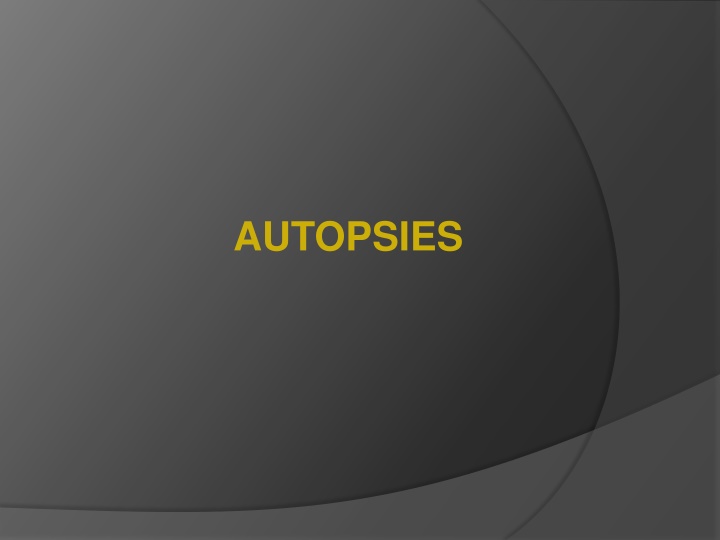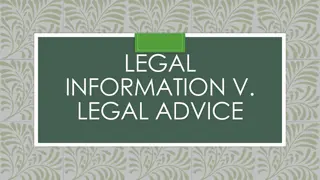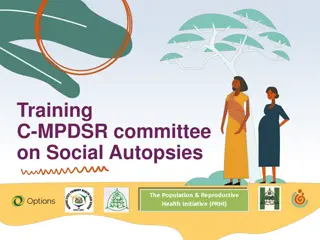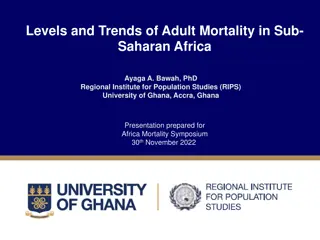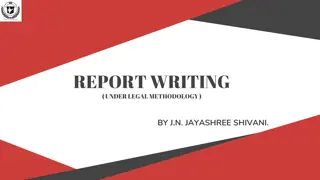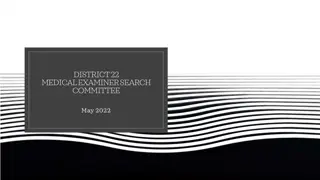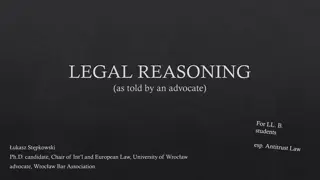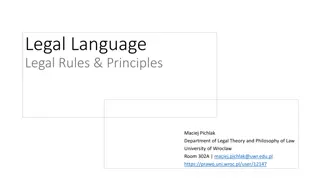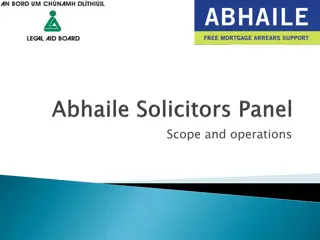Autopsies: Importance, Types, and Legal Significance
Autopsy, also known as necropsy or postmortem examination, is a vital procedure that provides valuable insights into the cause of death, diseases, hereditary conditions, and legal matters. This practice dates back to ancient civilizations like the Egyptians. By conducting autopsies, medical professionals can save lives by identifying diseases, provide closure to families, and gather crucial evidence for legal actions. There are two main types of autopsies: forensic and clinical, each serving different purposes in determining the cause of death and contributing to medical knowledge.
Download Presentation

Please find below an Image/Link to download the presentation.
The content on the website is provided AS IS for your information and personal use only. It may not be sold, licensed, or shared on other websites without obtaining consent from the author.If you encounter any issues during the download, it is possible that the publisher has removed the file from their server.
You are allowed to download the files provided on this website for personal or commercial use, subject to the condition that they are used lawfully. All files are the property of their respective owners.
The content on the website is provided AS IS for your information and personal use only. It may not be sold, licensed, or shared on other websites without obtaining consent from the author.
E N D
Presentation Transcript
Autopsy; also called necropsy, postmortem or postmortem examination, is the dissection and examination of a dead body, its organs and structures.
The term autopsy means to see for oneself and has been in use in reference to determining cause of death by examining a body since the 17thcentury. Ancient Egyptians were one of the first civilizations to practice the removal and examination of the internal organs of humans in the religious practice of mummification.
Why have an Autopsy done Why have an Autopsy done Saving Lives: Autopsies can enhance our understanding of diseases and how we die, and contribute critical medical knowledge. Forensic pathologists have identified public health emergencies, such as the anthrax terrorist attacks or other lethal infection diseases, as well as public health hazards, such defective cribs that kill babies. Discovering Hereditary Illness: Autopsies can help family members learn whether a relative died from an undiagnosed or misdiagnosed illness or disease that may be hereditary. Dr. Gregory J. Davis at the University of Kentucky College of Medicine says that 40 percent of autopsies performed in the U.S. reveal disease states previously unknown to physicians, in large part because the autopsy employs techniques that cannot be used on the living.
Providing Legal Evidence: Most of us think of autopsies in relation to homicide cases, but there are other ways in which autopsies can provide evidence for legal action. For example, if an autopsy determines a death to be the result of a work or environmental hazard, it may lead to compensation for family. If an autopsy reveals evidence of medical malpractice, it may be the grounds for a lawsuit. Easing the Stress of the Unknown: Autopsies can also be an important way for families and loved ones to seek reassurance or peace of mind after death.
Types of Autopsies Types of Autopsies There are two main types: Forensic: Examiner spends as much time on the external surface as they do on the internal surface because that s where the evidence is. This is usually as a part of an overall police investigation. Clinical: Usually preformed in hospitals by pathologists or the attending physician to determine the cause of death for research and study purposes.
Legally Defined manners of Death Legally Defined manners of Death Natural- Heart attack, complications from an infection, blood clot, pneumonia Accidental- Falling, Fire, Car wreck, extreme heat or cold Homicide- person killing another person Suicide- intentionally causing your own death Undetermined- unable to conclude how a person died
Getting Started Getting Started The body is received in the morgue and is refrigerated/stored until examination time. Autopsies are best if performed within 24 hours of death before organs deteriorate and before embalming which can interfere with toxicology and blood cultures. There are two types of mortuary cold chambers: Morgue - Positive temperature Morgue - Negative temperature Morgue + (35.6 / 39.2 F) most usual for keeping bodies for a few days or weeks. Morgue (5 / -13 F) used for keeping bodies which not have been identified. Body is completely frozen.
Gather all information as possible about the deceased and events that led to the death. This may include: Medical Records Consultation with doctor Interviewing family members Investigating the area where the person died Studying circumstances surrounding the death Consultation with police
Body is weighed, measured and X-rayed Photographs are taken of the body (front, back & naked) Fingerprints are taken (if any missing, parts are noted) Scrape underneath fingernails for evidence Examination of clothes Age, sex and race are noted Eye color, scars, moles, tattoos are noted Examination of the eyes (blood spots & etc.) Any body secretions and gun powder residue/ bullet holes Body fluids are drawn from the body for testing (blood, urine, spinal fluid, vitreous humour from the eye Body is cleaned and ready to be put on table
Equipment Equipment Body Block Cadaver Table Waist high and is plumbed for running water and has several faucets for washing away blood that is released during the procedure. Raised edges keep blood and fluids from running into the floor. Placed under the back of the body causing arms and neck to fall back while pushing the chest upward to make it easier to cut open.
Instruments Instruments
Procedure Procedure Y-Incision: The Y-Incision is the procedure used by the pathologist or examiner to open up the breastplate of the deceased and gain access to the body's major organs; heart, lungs, liver, stomach, spleen etc.
All the organs are removed and weighed ( usually removed in one unit but sometimes in sequence depending on the trauma to the body). Slices of each organ are taken and tested Depending on type of death, stomach contents are removed, examined and recorded If gun shot was involved, then any bullets would be removed and documented and saved for evidence
After the main organs are examined the examiner proceeds to the brain; (The body block is then moved to underneath the head) Deep incision begins behind one ear, travels over the top of the head and behind the opposite ear. The scalp is pulled away from the skull in two flaps; front going over the face and the rear going over the back of the neck so the skull is fully exposed. Electric saw known as the Stryker saw is used to cut and remove a wedge shape portion of the skull which exposes the brain. Brain is removed, weighed and examined. Any findings noted
Once everything has been examined, all the internal organs are returned to the body cavities or incinerated. The body is sewn back together A report will be done based on notes and findings while performing the autopsy Send tissue samples, blood, urine & etc. to lab for testing Refrigerate body to preserve it until its ready to be moved elsewhere
Once all test results are back, a final report will be provided giving the findings of the autopsy and the cause of death.
Example Autopsy Report Example Autopsy Report
Interesting Facts Interesting Facts In the 17th century, lacking chemical tests (and knowledge of disease transmission mechanisms), Italian physicians and autopsist Antonio Valsalva sometimes tasted the fluids he encountered in cadavers in an effort to better characterize them. In 1828 Irish immigrants William Burke and William Hare partnered to murder 16 people in Scotland for cadaver bounties paid for by a doctor who didn t ask questions. Hare testified against Burke who was hung in 1829. Burkes cadaver was publicly dissected and his skeleton remains on display at the University of Edinburg. Wallets made from his skin which was stolen during the autopsy were offered for sale on the streets.
Accurately weighing small organs like the thyroid and adrenals requires a triple-beam balance; all other organs are plopped down on a ordinary grocer s scale. At the end of an autopsy, the organs are either incinerated or put in a bag and placed back in the body before its sewn shut. In 1912, Boston physician Richard Cabot analyzed autopsies and claimed that some diseases were being misdiagnosed at an alarming rate of 80%. A 2005 study in Histopathology suggests that doctors still misdiagnose fatal diseases about a third of the time.
